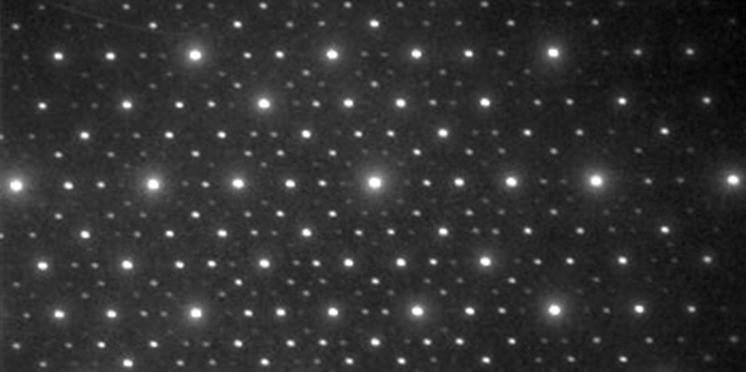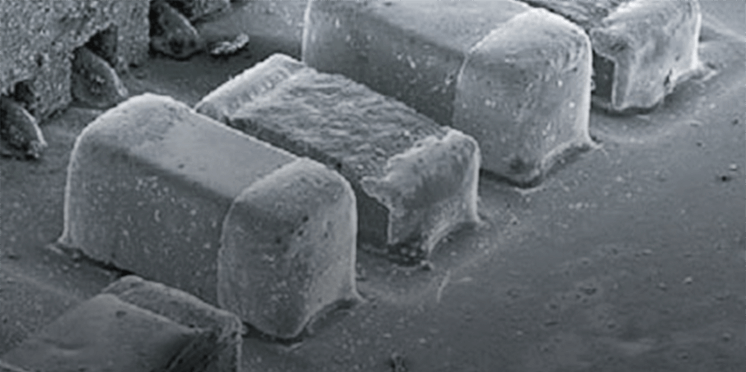金属圧着凍結法
金属圧着凍結法
metal mirror freezing (slam freezing)
[目次:試料等(試料および試料作製)]
急速凍結固定法の一種。液体窒素等の冷媒で冷却した金属ブロックに生体試料を圧着して急速凍結する方法。金属ブロックの材料には、熱伝導率の高い高純度の銅に金メッキを施したものを用いることが多い。試料の温度降下効率を高めるために、金属ブロック表面は鏡面仕上げが施されている。この方法では、比較的安価な装置で凍結が行えるが、加圧凍結法に比べて試料の浅い部分(20 μm程度)しか電子顕微鏡観察に適した凍結は行えない。主に組織等を固定する際に用いられる方法である。凍結後の試料を電顕観察する際には、(1)そのまま凍結切片を作製する場合や、(2)凍結置換法を行った後に試料を室温まで戻し、樹脂包埋後、超薄切片を作製する場合や、(3)凍結割断法によりレプリカを作製する場合がある。
Metal mirror freezing (slam freezing) is one of rapid freeze fixation techniques. This technique punches and rapidly freezes a biological specimen against a metal block cooled by a coolant such as liquid nitrogen. In many cases, high-thermal-conductivity, high-purity copper with gold plating is used for a metal block. To increase a temperature drop efficiency of the specimen, the surface of the metal block is prepared into a flat mirror-surface. This technique can be performed using a relatively inexpensive device, but provides a smaller freezing depth suitable for TEM observation (about 20 µm) than the suitable depth produced by high pressure freezing. This technique is mainly used to fix tissues. Specimen preparation for TEM observation of the frozen specimen is carried out by one of the following three procedures. (1) Applying freeze sectioning to the specimen, (2) Applying resin embedding and ultrathin sectioning to the specimen after the specimen is subject to freeze substitution and is returned to room temperature, and (3) Making a replica of the specimen by freeze fracturing.
関連用語から探す
説明に「金属圧着凍結法」が含まれている用語






